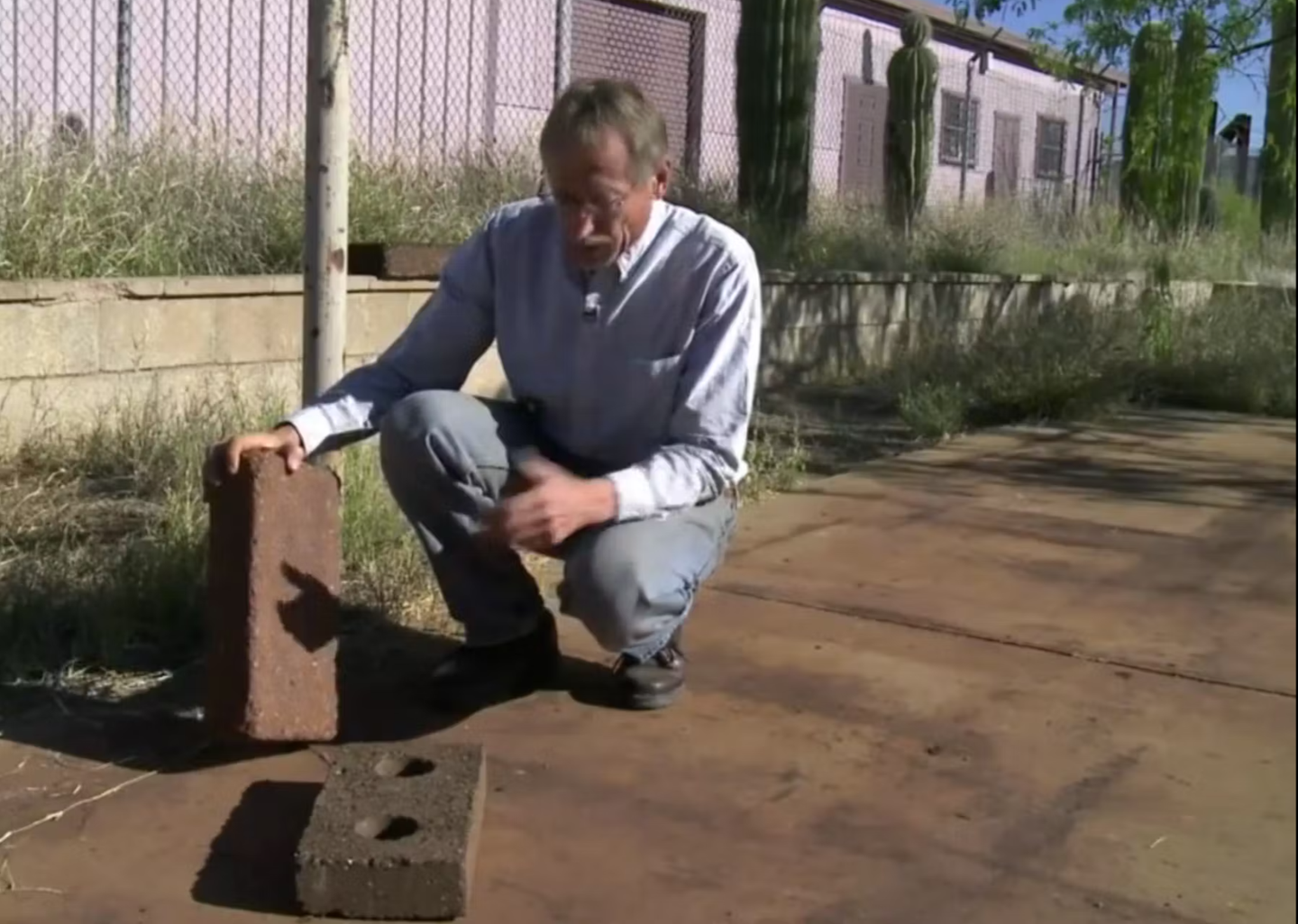University student accidently invents eco-friendly cement alternative that traps CO2
Ferrock’s core innovation lies in its utilization of waste steel dust, a byproduct of industrial processes, to create a cement-like material

Ferrock's core innovation lies in its utilization of waste steel dust, a byproduct of industrial processes, to create a cement-like material. (CREDIT: PBS)
In the world of scientific innovation, one can never predict where a groundbreaking discovery might originate. For David Stone, a former Ph.D. student at the University of Arizona's Department of Soil, Water, and Environmental Science, that momentous discovery came during a routine experiment in 2002.
Little did he know that this serendipitous occurrence would lead to the creation of an eco-friendly substitute for Portland cement – a material that would not only revolutionize the construction industry but also contribute significantly to environmental sustainability.
Stone's invention, named Ferrock, emerged victorious in a student innovation competition during his tenure at the University of Arizona. Its journey from a laboratory experiment to a patented invention is a remarkable testament to the power of scientific discovery.
In 2013, the U.S. Patent and Trademark Office recognized the value of Ferrock by issuing a patent for the invention. Today, David Stone, in partnership with Tech Launch Arizona, has taken the bold step of commercializing this groundbreaking technology through a company called Iron Shell.
Related Stories:
Ferrock's core innovation lies in its utilization of waste steel dust, a byproduct of industrial processes, to create a cement-like material that not only rivals the strength of conventional Portland cement but also boasts superior environmental credentials.
Cement serves as the binder in concrete, alongside aggregates like sand and gravel. Typically, the production of cement generates a staggering four billion metric tons annually, releasing approximately one ton of carbon dioxide into the atmosphere for every ton of cement manufactured.
In stark contrast, Ferrock exhibits a unique property – it hardens when exposed to high concentrations of carbon dioxide. Rather than emitting carbon dioxide during its production, this innovative material actively absorbs and traps the greenhouse gas. This carbon-negative attribute makes Ferrock a pioneering sustainable solution in the construction industry. The carbon dioxide diffuses into the wet Ferrock mixture, reacting with the iron to form iron carbonate, which becomes an integral part of the material's mineral matrix.
Ferrock Slab. Ferrock exhibits a unique property – it hardens when exposed to high concentrations of carbon dioxide. (CREDIT: Buildabroad.org)
Scientific testing has provided compelling evidence of Ferrock's superiority. It surpasses Portland cement in compressive strength and demonstrates several times greater flexural strength – the ability to withstand stress without bending or breaking. Additionally, Ferrock exhibits superior resistance to cracking, making it particularly suitable for use in harsh environments like saltwater.
David Stone reflects on the journey from his accidental laboratory discovery to this pivotal moment, stating, "This all started from an accidental discovery in a lab, which is actually the way it usually goes." He continued, "It has taken years to get just a basic understanding of the chemistry involved. But this shouldn’t be surprising, since scientists are still trying to figure out Portland cement, and they've had 200 years."
Ferrock Ferrock exhibits superior resistance to cracking, making it particularly suitable for use in harsh environments like saltwater. (CREDIT: Buildabroad.org)
In an era marked by increasing concerns about global warming and unsustainable practices, alternatives like Ferrock hold the promise of a greener future. Stone's commitment to the cause is unwavering as he declares, "I am into this for the long haul. Time is on our side, since in this era of global warming unsustainable processes like cement manufacture will have to give way to greener alternatives."
Doug Hockstad, Tech Launch Arizona's director of tech transfer, shares Stone's enthusiasm for the potential impact of Iron Shell and Ferrock. He states, "The technology stands to impact the world in a variety of ways, including both reduction of carbon dioxide production and sequestration of other carbon dioxide production, as well as recycling of waste products such as steel waste and in some cases, recycled glass. For all that, this represents an amazing engineering achievement that has the potential to create a great, positive impact on the environment."
David Stone's Ferrock represents an amazing engineering achievement that has the potential to create a great, positive impact on the environment. (CREDIT: Tech Launch Arizona)
Stone acknowledges the pivotal role played by Tech Launch Arizona in his entrepreneurial journey, emphasizing, "Scientist inventors are not exactly known for their business skills, but (TLA) believed in me from the beginning and felt that I should play a central role in the commercialization effort." He adds, "The terms were very generous and demonstrated that they think this commercialization effort will succeed. Beyond that, they have continuously aided my efforts to find business advisors, get the expertise I need and build a team."
With Ferrock poised to revolutionize the construction industry while reducing carbon emissions, the world eagerly anticipates the transformative impact of this eco-friendly innovation. David Stone's journey from a laboratory discovery to a pioneering entrepreneur is a testament to the limitless potential of scientific innovation.
For more science news stories check out our New Innovations section at The Brighter Side of News.
Note: Materials provided above by The Brighter Side of News. Content may be edited for style and length.
Like these kind of feel good stories? Get the Brighter Side of News' newsletter.



